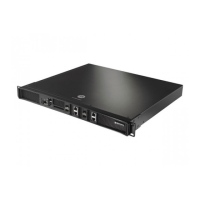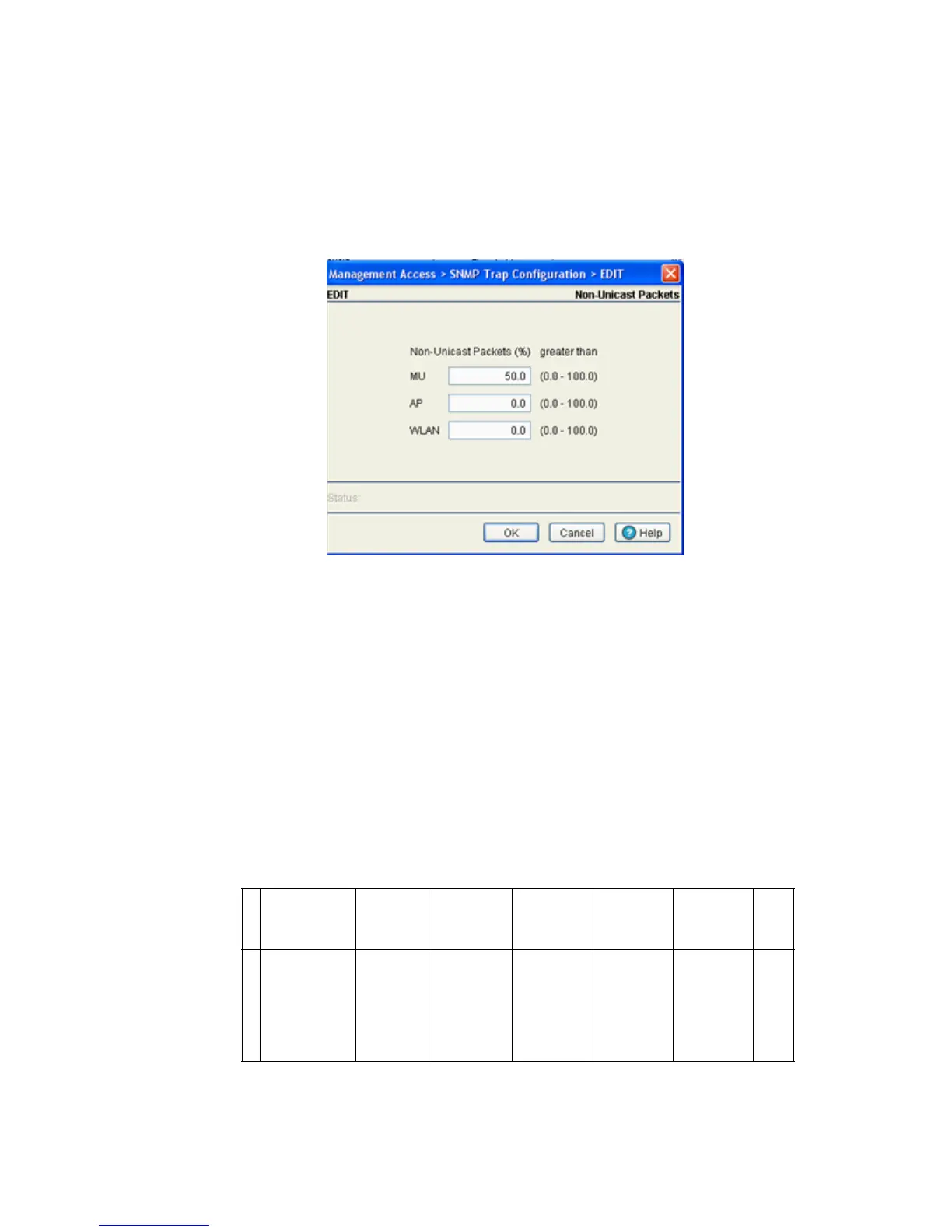Switch Management
7-15
4. Select a threshold and click the Edit button to display a screen wherein threshold settings for the MU,
AP and WLAN can be modified. Each screen is slightly different as threshold parameters are unique.
Adjust the values as needed (between 0 -100) to initiate a trap when the value is exceeded for the
MU, AP or WLAN. Ensure the value set is realistic, in respect to the number of MUs and APs
supporting WLANs within the switch managed network.
5. Use the Maximum Number of Packets to Send a Trap field (at the bottom of the screen) to enter
a value used as the minimum number of data packets required for a trap to be generated for a target
event. Ensure the value is realistic, as setting it to low could generate traps unnecessarily. Refer to
Wireless Trap Threshold Values on page 7-15 for additional information.
6. Click the Apply button to save changes made to the screen since the last saved configuration.
7. Click the Revert button to revert the screen back to its last saved configuration. Changes made since
the contents of the screen were last applied are discarded.
7.4.2.1 Wireless Trap Threshold Values
The table below lists Wireless Trap threshold values:
Unit of Threshold
Values
Displays the measurement value used to define whether a
threshold value has been exceeded. Typical values include Mbps,
retries and %. For information on specific values, see Wireless Trap
Threshold Values on page 7-15.
Table 7.1 Wireless Traps Threshold values
# Threshold
Name
Condition Station
Range
Radio Range WLAN
Range
Wireless
Service
Range
Units
1 Packets per
Second
Greater than A decimal
number
greater than
0.00 and less
than or equal
to 100000.00
A decimal
number
greater than
0.00 and less
than or equal
to 100000.00
A decimal
number
greater than
0.00 and less
than or equal
to 100000.00
A decimal
number
greater than
0.00 and less
than or equal
to 100000.00
Pps

